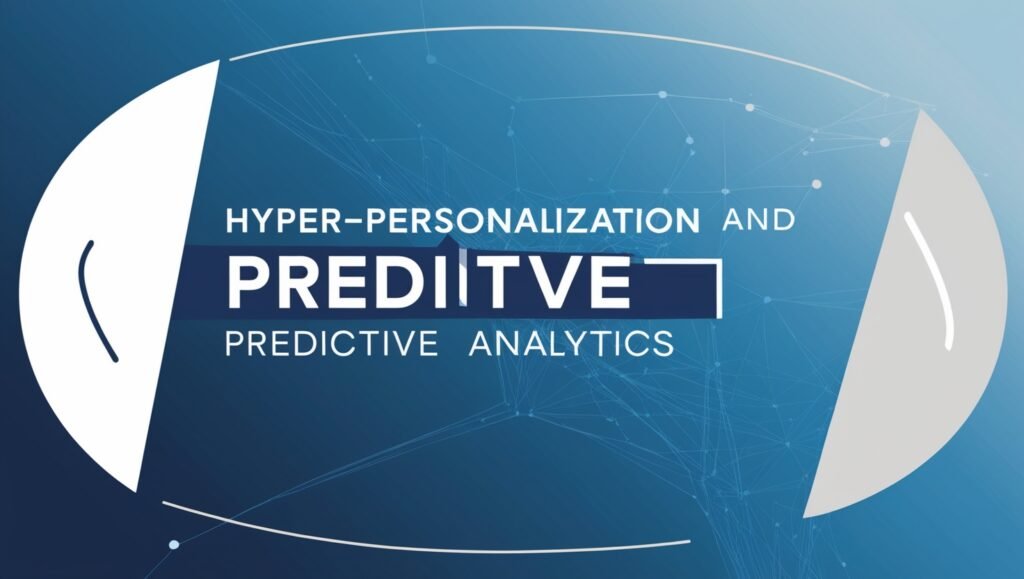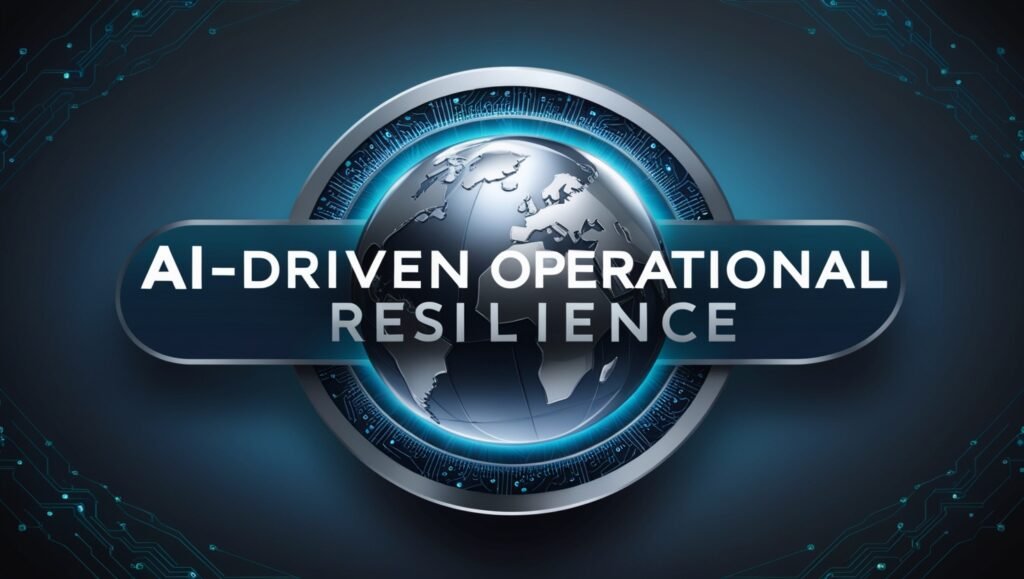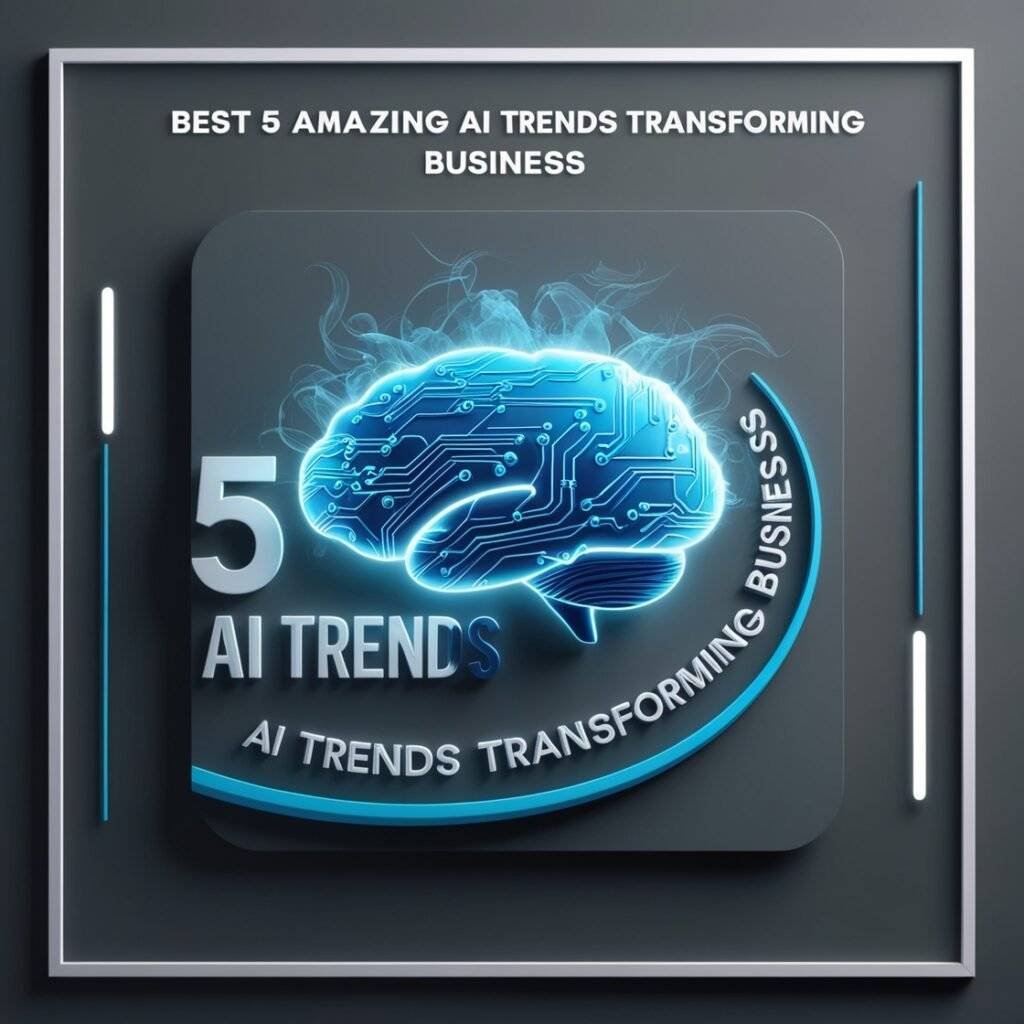Overview
By 2024, we have the following business problems: inefficient operations and long cycles that slow down organizational development. To address these concerns, there are five AI trends that are reshaping business. Hyper-personalization helps the companies to segment the customers, while the automation applications based on the AI can help in completing the monotonous operations. This kind of analytical approach is used to make future projections concerning an organization and its risks or gains. With cybersecurity driven by Artificial Intelligence we can safeguard the data against correlate threats thus maintaining business operations in a fully digitalized environment.
Operational resilience of companies makes it easy for an organization to respond to the disturbance and still function effectively. Rather this blog is going to look at how these AI trends are beneficial and will provide tutorials and hack for its usage. These innovations should be adopted because they do make changes to the business processes, and do help organizations to overcome the challenges in cut throat competition.
Top 5 Most Outstanding AI trends and their impact on Business
1. Hyper-Personalization: Building Customer Experience
Problem:
Most organizations find it difficult to actively involve customers because most marketing strategies used are generalized hence not considering the customer needs.
Solution:
Hyper-personalization uses artificial intelligence and business analytics to deliver targeted content to the customers while making sure every client gets saw relevant content and recommendations.
Key Benefits:
• Increased Customer Engagement:
The concept of gamification offers companies a great potential of increasing the interaction rates, and subsequently, customer loyalty among the targeted clients.
• Enhanced Conversion Rates:
It enhances conversions since people are familiar with brands that closely match personal preferences and past experiences.
• Improved Customer Retention:
Personalized experiences lead to vice intense customer interactions and thus, are more likely to gain customer loyalty and commitment to the brand.
• Data-Driven Insights:
AI involves large datasets to decipher the customers’ behavior to ensure businesses can predict demands and align methodologies.
• Competitive Advantage:
Hyper-personalization serves in the interest of companies, as it provides a competitive advantage as consumers’ expectations shift and customized experiences are provided.
• Improved Marketing Strategies:
As for the campaigns, it assists the business in creating brands useful for marketers and guarantees that the business realizes decent conversion rates for niches developed.
Example:
A retail company similarly applies hyper-personalization in product recommendations based on surfing history and sees a rise in sales conversions by 25% within the first six months.

2. Predictive Analytics: Proactive Decision-Making
Problem:
Organizations are unable to fully capitalize on the available market trends because they are unpredictable and the organizations conduct inadequate analysis on the trends in the market.
Solution:
It is a studying of past events in order to make predictions about the future and is usually powered by artificial intelligence technology.
• Key Benefits:
• Enhanced Accuracy in Predictions:
Another advantage of AI algorithms is that when analyzing large datasets, they are much more accurate than classic methods, making it easier to detect patterns that increase the reliability of the forecast by many times.
• Real-Time Insights:
Appropriate for everyone, accurate predictions give possibilities for the fast decision based on new tendencies inside your business and customers’ demands successfully.
• Cost Reduction:
As a result, choice, demand, and inventory optimization come into the focus of attention, which contributes to the decrease of operating costs and minimum wastage across the markets.
• Improved Customer Experience:
Predictive analytics in customer behavior helps the business to market products to its clients to their satisfaction through personalization.
• Informed Risk Management:
Risk management analysis pinpoints risk factors when they are in their inception stage, so preventive measures have to be taken to protect systems and functions.
• Anticipating Market Trends:
AI functions, with the use of past data, to predict market changes and help the business forecast change to remain relevant.
Example:
A retail firm applies predictive analytics for analyzing purchasing behaviors and is, thereby, able to minimize stockouts by 30%.
3. AI-Enhanced Cybersecurity: Protecting Sensitive Data
Problem:
Businesses today are being exposed to heightened levels of cyber risks that can threaten to overturn some of these organizations’ existence and also endanger clients’ confidential information making standard security measures inadequate.
Solution:
AI is recognized in cybersecurity since it can identify threats autonomously, work with a significant amount of data and address incidents in time.
• Key Benefits:
• Enhanced Threat Detection:
Machine learning algorithms work with big data and make it possible to detect new cyber threats right on the spot.
• Improved Response Time:
Computer generated actions against identified threats result in less time expended between the identification and counteraction of threats resulting from cyber-attacks.
• Proactive Defense:
AI way for predictive analysis for organizations, they stand guard to predict where an organization may be under threat and make preparations to protect against attack.
• Scalability:
AI solutions can naturally manage a large amount of data and scalable to a larger number of devices while security is also strong as the number of businesses rises.
• Adaptive Learning:
AI adapts to new occurrences eventually as well as previous events and becomes effective at recognizing and mitigating new threats as well.
• Automated Security Protocols:
Automated security solutions enhance simplicity in operations and decrease the exertion on the IT staff while raising the certainty of security against cyber risks.
Example:
An example of an AI business application is a financial firm that adopted good cybersecurity especially help in identifying img; fraudulent transactions and the time taken to address this threat and loss.

4. AI-Powered Automation: Boosting Efficiency
Problem:
Managers always see themselves dealing with routine operations that slow down organizational performance and demotivate personnel.
Solution:
AI embraced automation augments the operation of a system, and work, through engaging artificial intelligence to allow machines complete mundane operations.
• Key Benefits:
• Increased Efficiency:
Applying AI automation recreates such activities at a faster pace and allows employees to spend more time on those creative tasks that a machine cannot solve.
• Cost Reduction:
Minimizing reliance on human participants not only results in improved accuracy of processes, but also reduction in overhead costs related to payroll and resource demands.
• Improved Accuracy:
The use of artificial intelligence in solving organizational issues enhance efficiency since duty execute its operations with considerable in various operations.
• Scalability:
AI automation systems can efficiently provide increased scale and load handling capabilities, without demanding constant changes to the basic framework.
• Enhanced Customer Experience:
Automating the processes of customer interactions leads to satisfying their needs and wants faster through timely feedback.
• Streamlined Operations:
Minimization of routine processes to increase efficiency makes teamwork timely and strategic across the company departments.
Example:
A marketing team leveraging AI automations to create specific email marketing campaigns based on customers’ behavioral data boost the engagement rates.
5. AI-Driven Operational Resilience:
Problem:
There are more and more unpredictable events that challenge business operations and need immediate action to continue the work and minimize loss.
Solution:
AI strengthens operational reliability by supplying data, automating replies, and optimizing control during disruptions.
• Key Benefits:
• Improved Risk Assessment:
The primary advantage of AI is used in analyzing big data to consider various risks as soon as possible to reduce threatens and make the right decision.
• Proactive Decision-Making:
In predictive analytics, AI enables organizations reduce the effect of disruptions on operations because it helps the businesses detect challenges ahead of time.
• Continuous Learning:
By means of experience, AI systems enable organizations to craft approaches to deal with and avoid future exposure to similar threats efficiently.
• Streamlined Communication:
AI comes in handy to assist organizations in communication during calamities; notable here is that regular communications are upheld to disseminate timely information among the concerned parties for response.
• Increased Competitive Advantage:
Companies that integrate AI for operational resilience can provide against the unforeseeable circumstances than their competitors.
Example:
An example in the financial industry is the use of AI to watch for unusual activity in a stream of transactions so that a financial institution can prevent and counteract fraud as soon as they occur.

Conclusion: The Impact of AI Trends on Business
In 2024, five main trends in AI continue to advance in corporate environments as the tools necessary to augment operations and drive forward revenues are embraced. Users get to experience personalized services offered by companies, which in turn enhance the level of interaction enhanced through data analysis. Automations are done via the use of artificial intelligence, thereby making employee workload more efficient to work on strategic projects and enhanced productivity.
Predictive analytics can give organizations the ability to forecast the trends in the markets, to make intelligent decisions on their effective allocation of their resources. With the use of Artificial intelligence cybersecurity, companies guard their data from emerging threats to keep business running in today’s hybrid world. Finally, the adoption of AI in operational resilience ensures that the company responds rapidly to changes or challenges while remaining productive even during change. The adoption of these ideas translates into changing business operational models to create better and new opportunities for development.
These AI solutions are making it possible for organizations to increase their consumers’ satisfaction, decrease their expenses, and gain a competitive advantage in their market spaces. It is incumbent on organizations to adopt these advancements so as to excel in the current high growth and highly competitive market. Through the use of selling intelligent technologies, it is possible to work round various obstacles and achieve future stability for organizations.



